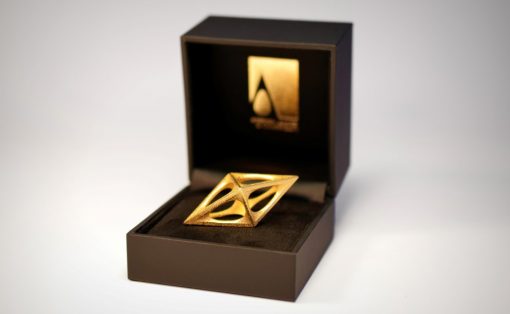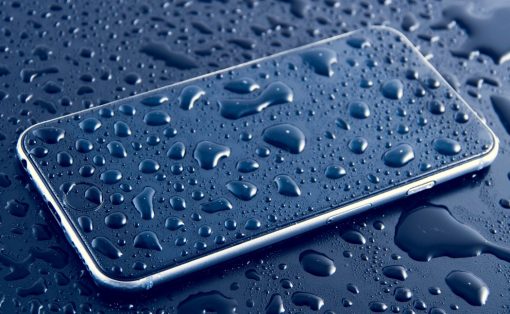Zippy Flounder; regulars will certainly recognize his name. His comments have been met with both colloquial admiration and austere criticism. Love him or hate him, he has over 30 years of experience in industrial design so perhaps what may seem like aimless “bah humbugs” are actually valid points from a man who’s “been there, done that.” In our first of many guest contributions, Zippy tells it like it is. So hit the jump, read the article, and don’t hesitate to leave comments for him.
Editor Tran has invited me to write a column from time to time about design and at first I thought, hey no problem. Well just like when you go from idea to reality the hard work sets in and you realize what you think is a piece of cake will take some serious work. In choosing this first column, I decided finally after a few drinks that (given the times) a discussion of some of the lessons I have learned over the past 30+ years as a product designer would be in order. I started out when it was real bad, early 70’s (first oil embargo, double digit prime interest rate and stagflation) so what’s on the horizon is somewhat familiar.
Ok lessons from the trenches, the musing of a top master sergeant of design and construction (top kicks are the guys/gal’s that are the real backbone of an army even a general (smart ones) will listen to them when they want the truth without all the bullshit).
First lesson
We should be Santa clauses. Ok what that means is what we should strive to do is facilitate our clients wishes into reality. The client may be your boss, some dude with a few bucks or a whole boatload of people but in the end, we must be empathetic to design for THEM not us. Hell, it is easy as pie to design for ourselves or even other designers. Designing for yourself or your peers is a lot of fun because it is like karaoke – makes you feel great but it is not real. Therefore, the mark of a pro is the ability to design for a market and have them find value in it, exchange their sweat (money) for its ownership. If we are not doing that, it is just mental masturbation or art, not product design.
Design for others is not easy, but rewarding, as a way of illustrating it, here is a little story about one of my first projects. Back in the day geodesic domes were a hot thing, very cool, and to a young guy like me appealing because well, they were not square. The project I got as a hand off from an architect friend (I think he just wanted me to quit bothering him) was to come up with an interior structural layout and design for a 30 foot 5/8ths geo dome for a young couple. I was young and back then work was hard to score so ANYTHING that would pay I jumped on, besides I had a VISION I knew I would knock their socks off.
I set to work, did not ever talk to the clients, did not want to pollute my vision you see. I jammed and jammed sketches working to cram a bedroom, bathroom, kitchen, dining room into this space with out screwing up its feel. I succeed at last, and went ahead and did a scale model (we did lots of models back then, as only NASA, IBM and gov had computers) was jazzed to show it to the client. I called my architect friend to set up the meet, and he wanted to see it first, so off I went waiting to bask in the glow of his awe of my great design.
The meet started off well enough, words like “innovative” and “interesting” and even a “cool!” were uttered, but then the shoe hit the floor, my friend said,
“Zippy, did you read the brief, talk to the clients on the phone or more importantly go and meet them at their current home?”
I said (feeling that something bad was about to happen) “no, I wanted this to be a fresh solution with a clear vision”. There was a silence, and then he said,
“If you had, you would have known that they have 2 small children and a dog, they have quite traditional furniture, and are only looking at the dome as an energy efficient structure not as a design statement”. He went on to say, “Zippy, you have designed for yourself and in that you did a great job as it would be very cool, almost perfect for a 20ish single guy but for that client it has so many problems that its beyond salvage.
Don’t toss the design go find a 20 -30 year old guy with enough money to build it (very very rare in that day) or hold on to it for yourself later.” The crusher was this, “Zippy, I will pay you your fee, you did what we contracted you to do but I cannot show it to our client as it totally ignores their wants, needs, and concerns”. My friend then said this “we designers provide a service, we have training, skills, talent and knowledge that most do not have. That service is to be able to in effect be their Santa clause, bringing their wishes to reality”. That has stuck with me all these years, it’s true, oh and by the way I still have that model of the dome….should build it some day I guess.
Learn your tools and everything around you
Ok you may be the snitz when it comes to womping up a nifty design on the ‘puter but how does it fit into the overall business, if you don’t know, than you don’t know enough. Your job as a real designer is to see and blend all aspects of bringing that product to market. Sounds like a big challenge – it is; takes a lifetime (you never stop learning) so try to learn by talking to everybody in the chain about what their concerns are. I mean everybody from the account, production folk, to the shipping clerk. To be a real designer you have to do the Leonardo thing, know the process from sperm to baby to collage, the whole deal.
Why should we bother you may ask, pretty simple the more we know how it all fits together the more likely we are going to be able to provide real value to our customers, and sometimes it’s a simple thing. I have many stories that would make this clear, but here is a simple one. On one project we were beating our heads against the wall trying to figure out how to make a bike computer water proof, looked at all sorts of solutions but the battery door was just letting the H20 no matter what we did.
I was trying to figure out the solution at the local pub and over a beer, one of the tooling guys sat down on the stool next to me. I knew this guy a little from being out on the floor and borrowing the use of a milling machine from time to time. He asked me what I was drawing and so more about being polite than anything else I told him. He mulled it over for a bit and said, “Ok zippy, buy me a beer and I will tell you how to solve your problem.” I said, “Solve or not, the next beer is on me, so tell me what’s your idea”. He had asked some questions such as how much power it pulled, what type of batteries etc I had planned, questions you would not expect from a “tooling” guy.
He fired up a smoke (lots of us smoked back then) and said while snapping closed a Zippo lighter with odd logo on it “well zippy you’re thinking about the problem all wrong. You will not ever get a o ring to seal that little battery door for more than a few times and when it fails the product will too pissing off the customer. What you want to do is get rid of the battery door completely, so why not just use a little NiCad battery and an induction coil to recharge it. That way your customer never has to buy some weird ass battery, the unit cannot ever leak and will be easier to tool and produce. I told him I would look into it, and did, the numbers made the product better, and even a bit cheaper, not to mention the customers thought it was cool that it was rechargeable. Remember the tooling guys Zippo with a funny logo on it, well the logo was of a little cartoon skunk, the logo of the famous Lockheed skunk works (P80, U2, SR-71. F-117a) and they did not sell them in the gift shop…
Be humble and empathetic
Pretty simple, you may think “oh I am a designer” and look down on some guy in grease stained coveralls out in the tooling floor, but the hard truth is, with out him your just putting ink on a piece of paper so LEAR HIS MIND. The more you know the more you can do. If that guy says “well that’s going to cause us to revamp the bosses and the ejector pins” don’t just flip him/ her off but realize the changes they’re talking about goes to total project cost that may kill your product if you don’t listen. As in the above story, you never know where somebody is from, what they know, or whom they know until you listen to them, do not talk, and just listen.
The 10 principles of good design by Dieter Rams
Formulated in the sixties true then, true now so grab a cutting torch and burn these into your office wall.
- Good design is innovative.
- Good design makes a product useful.
- Good design is aesthetic.
- Good design helps us to understand a product.
- Good design is unobtrusive.
- Good design is honest.
- Good design is durable.
- Good design is consequent to the last detail.
- Good design is concerned with the environment.
- Good design is as little design as possible.
Design is risky
You may say “frack it with this corp. BS, I am going indi” and hey I did it myself 30 years ago so let me give you a few heads up if you go that way.
live below your means. It is simple, your income at best will be fluid so remember you can build what most people desire, so instead of buying, build.
The client is right (ish) the only the very rich can say FU to a paying client, but also do not just take any asswipe on. If you think the client is a bad apple or you have no feeling for the project, then turn them down and eat Ramen.
You are not going to get rich, sorry that is the truth, but you will have a rich life doing interesting things meeting cool people so it is a trade off.
Never give up, in some respects this profession picks us, not the other way around so just remember not everybody can be front and center on the big stage. Lots of us are just “session musicians” grinding it out, making beauty.
Cheers from your old top kick Zippy Flounder.
Contributer: Zippy Flounder






